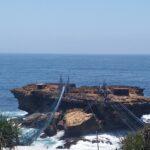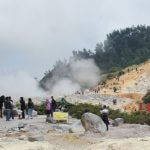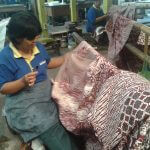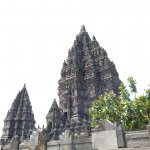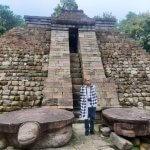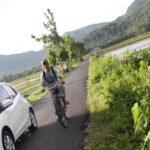Contents
Yogyakarta City Destinations
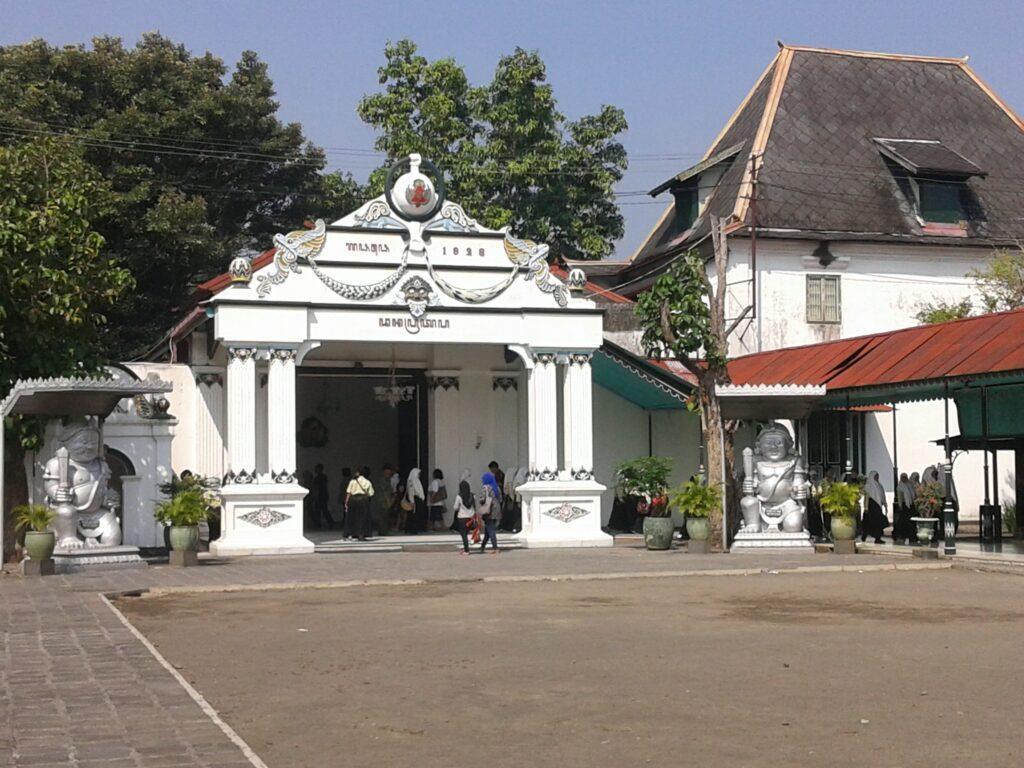
Notice
Yogyakarta Sultan Palace is close every Mondays
History of the Yogyakarta
Lies 18 miles (29km) inland from the southern Java coast and near Mount Merapi (9,551 feet /2,911m). in 7thcenturythe locality formed part of the Buddhist kingdom of sailendras, which was contemporaneous with the Srivijaya Empire of Palembang (Sumatra). It was probably included in the later Kediri and Singosari Kingdom ruled the region successively. At the end of the 13th century the Hindu Majapahit Empire rose un eastern Java, and what is now Jogja passed under its rule.
In the early 16th century, central Java had two Muslim Kingdoms, Demak and Pajang,wich were incorporated into the powerful Muslim kingdom of Mataram by Senapati Ingalaga (reigned 1584-1601). The Dutch became established in the region in 1602. After numerous conflicts, Mataram subdued the state of Surabaya in eastern Java in 1625 and gained general supremacy in the territory. In rebellion against Dutch intervention in Javanese politics, Sultan Hamungkubuwono I moved his court from Kota Gede to Jogjakarta. In Mataram in 1755 and renamed the town Jogja. The British captured Jogja in1811, and Sultan Hamengkubuwana II was deposed and exiled. In 1816 the Dutch repossessed the island of Java, and 1830 Dutch colonial rule was firmly established in the sultanate. After the period of Japanese occupation during World War II, the Republic Indonesia was formed. The national capital was removed to Jogja when the Dutch occupied Jakarta in 1946, it was moved back to Jakarta in 1950 upon independence, an Jogja was given the status of a special district in the Republic of Indonesia.
Yogyakarta City
Jogjakarta known as Jogja is flanked by majestic Mount Merapi and the immense Indian Ocean. With an area of 3,185 sq km, the special region of Jogjakarta is of the most densely populated regions in the world, and this has been the case for very long time. Divided into three separate zones, the eastern and western with its dry limestone mountain ranges and the center arable land for cultivation, Jogja is best seen during the season from May to October. Temperatures range between extremes of 18 C and 35 c, with the average lying between 26 C and 28C. Average humidity is 74 5 between extremes of 65 % and 85%. Jogja lies approximately 7 South of the Equator and is bathed in tropical climate, the atmosphere is hot and humid the wealth and variety that this City has in store is one of many aspects that makes Jogjakarta a city of endless wonder and fascination. The Airport is 8 km northeast of the city center.
Sultan Palace
The Sultan’s Palace or Kraton, with its grand and elegant Javanese architecture, lay in the centre of the city. It was founded by Pangeran Mangkubumi I. He chooses the right for the site of the building, right between Winongo River and Code River a swamp area that dried up then. The Sultan’s Palace stretches from the north to south. the front yard of the Sultan Palace is called Allun-All;un Utara (North Square) and the back yard called Allun-Allun Selatan (South Square). The design of this historical building demonstrates that the Palace, the obelisk (the Tugu, the column) and the mount Merapi positioned in one line. It is believed that the axis is blessed. In the-old times Sri Sultan is used to concentrate his mind long this axis before leading meeting, making decision or giving order to his people.
Each part of the building has its own name. The Palace meeting is called Pagelaran. It is the place where the formal meeting of the Kratons’s officials is held. Manguntur Tangkil Hall is the place where the Sultan has his set. This hall is in Siti Hinggil, Siti means ground or land while Hinggil means high, so it called Siti Hinggil because the place where it built is higher than any other ground around it. It was once a tiny island on the swamp. The front gate is called Danupratopo. Two giants called Gupalo guards it. One is called Cingkorobolo and the other is Boloupoto. The two statues are perceived may protect the palace from any harm or evil.The main part of the Sultan is called Purworetno, aplce where the Sultan performed his duties. beside Purworetno there are two story buildings callled Panti Sumbago. This biuding is the Sultan’s private’s library. The building wher the the Sultan lives called Gedong Kuning
The palace was founded by the first Sultan, Sri Sultan Hamengkubuwono who fathered a line of Jogjakarta kings. Relevant to the name, the Sultan Palace has its own rules, self-governing systems and traditional custom that is still preserved up to the present. Lying in the center of Jogja city, this palace is the main tourist attraction in Jogja. The palace is now dwelling place of Sultan Hamengku Buwono X who is also the Governor of Jogjakarta special Region. As the palace of Jogjakarta kings, physical or non- physical, it has sacred symbol, completed with divinity, value, culture, philosophy, history and humanity. There are a museum displaying souvenirs from The Sultan’s guests especially from a board called Souvenir Museum, as well as a museum of Batik collection and museum Wayang (puppet). Equally interesting the various forms of traditional art activities such as shadow puppets show, classical dances and gamelan performances are still performed in the court and open to the public.
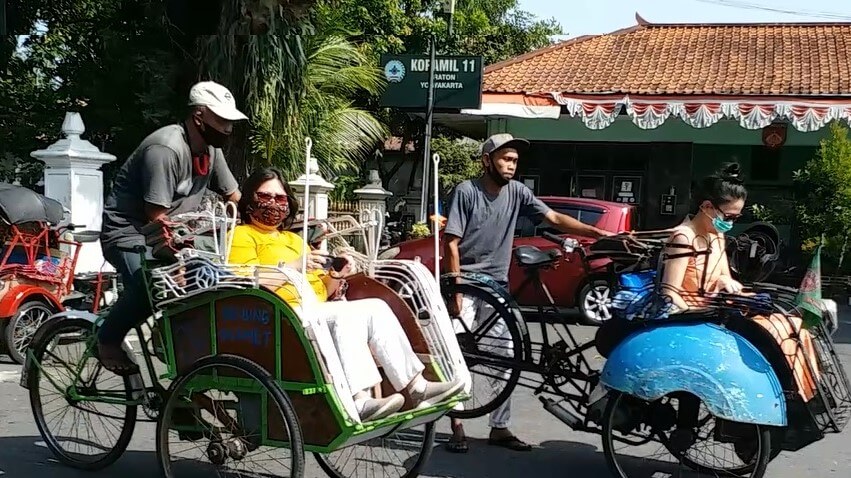
Taman Sari
Tamansari Water castle is located on the street about 500 meters south of Jogjakarta Palace. Tamansari is a park, which once was a recreational place for the Sultan the royal family. There were many facilities built in this complex including a bathing pol, man-made islands, an artificial lake, and floating mosque. Nowadays this park and castle is no more than a collection of ruins. Tamansari was built by Sultan HB I and has functioned as a royal recreational park until The Sultan HB III period. The remainder of the complex which can be seen are Gapura Panggung (the main entrance gate on the Eastside), Umbul Kawitan, (bathing pool), Pamuncar, Gapura Agung (the Western Gate), Sumur Gumuling, Plengkung Taman Segara, Pulau Kenanga and pulau Panembung.
Malioboro Main Street
is the name of one of the three streets in the city of Yogyakarta which stretches from Tugu Yogyakarta to the intersection of the Yogyakarta Post Office. Overall, it consists of Jalan Margo Utomo, Jalan Malioboro, and Jalan Margo Mulyo. This road is the axis of the Yogyakarta Palace Imaginary Line. The Malioboro train is the source of inspiration for the name Jalan Malioboro to transport passengers from Yogyakarta to Malang.
This road connects Tugu Yogyakarta to the Yogyakarta Palace complex. This road ends at Beringharjo Market (on the east side). From this point the name of the street changed to Jalan Achmad Yani. Here are the former residences of the governor of the Dutch East Indies on the west side and Fort Vredeburg on the east side.
Handicrafts
Batik Handmade
Batik is an art of painting which technically done by using wax. It is presumed as non-originally Jogjanese art, since it is also found in other regions. The oldest batik center is Wukirsari in Imogiri. It has become a center of batik since Jogja Sultanate (Kraton) existed (around 1800s) classic batik motives were produced here. At this time, the batik painters are not only producing exclusive batik ordered by Kraton Family, but also producing batik with traditional motive and classic color for common people. Batik with painted motives can be found in Taman Sari batik Center. It is around the remain of rest area of Kraton family – Tamansari. You can find batik in cloths, table runners, napkins, decorative painting, etc. Taman sari batik is peculiar, it has bright color and various motives which totally different from classic batiks that have flora and fauna motif only. Tamansari Batik has some motives of Jogja scenery, to include the andong (traditional cart), Pedi cab, mask, houses, etc
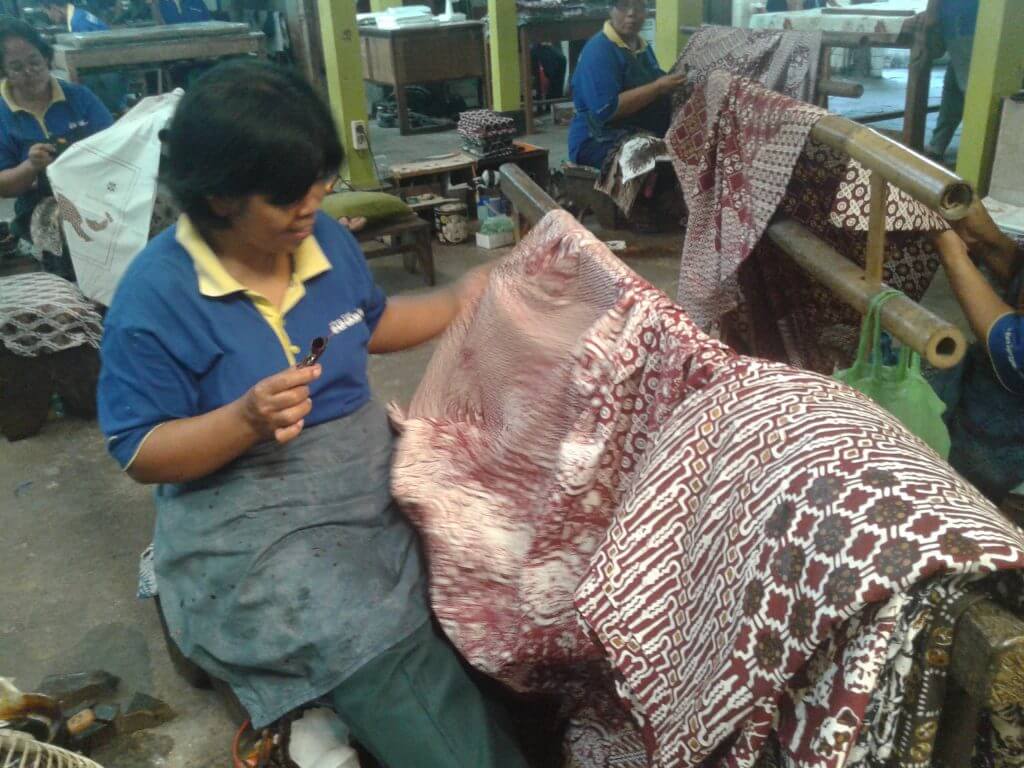
Silver ware home Industry
Silver craft had grown since Mataram Islam existed in Kotagede (in 1600s). At that time, Panembahan Senopati brought the silver and gold craftsmen from Bali to Kotagede to make a royal decorations and ceremonial equipment. Silver crafts business had prosperous era during 1930s to 1940s when some companies got orders from Europe and exported their products to The Netherlander’s and others European countries.
Recommended tour packages to visit Yogyakarta
- Wonderful Timang Beach Tour From YogyakartaTour to Timang Beach location where visitors should take cable cart traditional gondola motorized by local people or by cable bridge from beach to reach island
- Wonderful Dieng Plateau One Day Tour from YogyakartaDieng Tour is one day tour from Yogyakarta to DIeng Plateau to visit complex of oldest Hindu Temples from 7th century, visit Sikidang, and Telaga Warna
- Amazing Jomblang Cave TourJomblang Cave Tour, a vertical cave in Gunungkidul, is a location where visitors should use a hoisted rope to descend and ascend on the same single rope.
- Yogyakarta City One Day TourYogyakarta One-day tour to visit destinations in Yogyakarta city: Sultan Palaces, Sultanate Garden, Luwak Coffee, Silver Batik Home Industries, and Malioboro
- Wonderful Prambanan One Day Tour from YogyakartaA day tour depart from Jogjakarta City in the morning to Prambanan Temples, The biggest ancient Hindu temple built at 9th Century.
- Wonderful Sukuh Cetho Temples One Day Tour from YogyakartaA day Tour depart from Jogjakarta to visit Sukuh and Cetho temples of 13 Century with architecture similar with Aztec pyramid and Sumerian statues.
- Wonderful Java Bali 12 Days 11 Nights Overland TourJava Bali 12 Days overland is long trip by land from Jakarta passing cities Bogor, Bandung, Yogyakarta to Borobudur, Prambanan Malang to Bromo, finish in Bali
- Wonderful Prambanan One Day Tour From JogjakartaA day tour departs from Jogjakarta City in the morning to Prambanan Temples, the biggest ancient Hindu temple built in the 9th century, 17 km from the city, and back to Jogjakarta.
